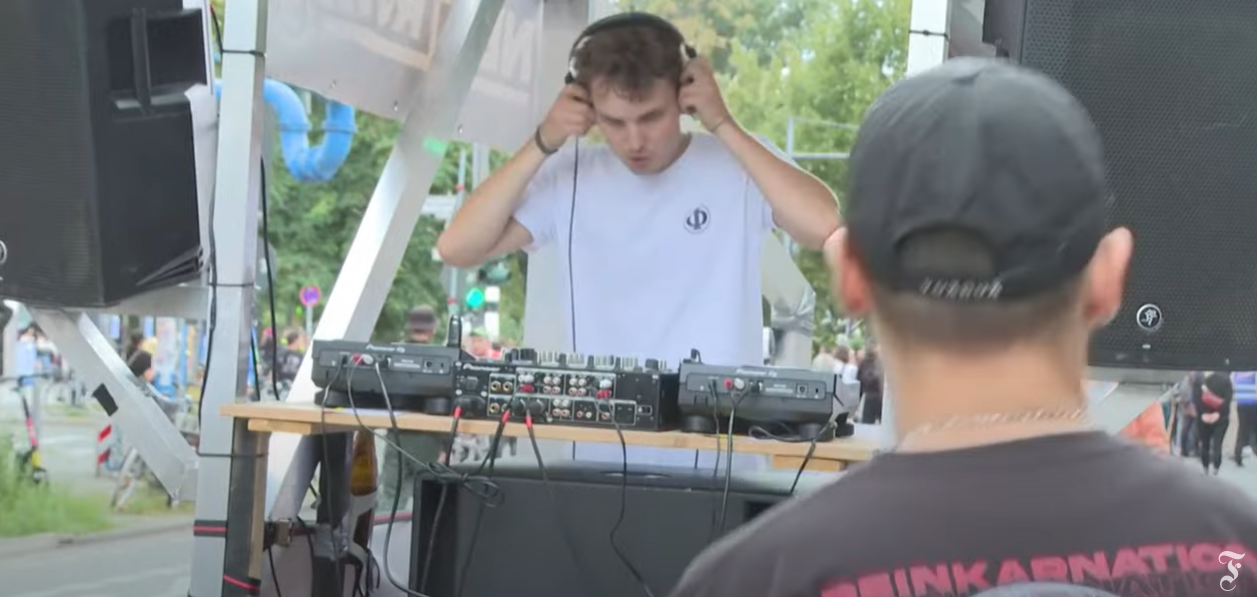 Dispatches
DispatchesMykyta Vorobiov is a political science student at Bard College, Berlin. He previously studied at Ukrainian Catholic University in Lviv, Ukraine, the National University of Kyiv-Mohyla Academy, the University of Tartu, and the University of Zagreb.
I never thought that protests could be associated with hedonism, i.e. having a good time. Based on the experience of Eastern Europe, where I was raised, I have always considered protests as a form of disobedience – violent, angry, depressive and sometimes, dangerous. However, the experience of the last two weeks in Berlin, where I’ve now emigrated, has made me reconsider the process and forms of social disobedience.
On September 2nd, more than 20,000 people went on the streets of Berlin to dance and protest. The German Federal Ministry of Transport plans to expand the A100 highway through the area, full of legendary nightlife. According to the Club Commision’s Report, at least 21 clubs and cultural venues (bars, cinemas, hubs) are threatened. This expansion will lead to the demolition of the area and all the heritage located there.
Wandering around the protest venue, I felt something was different. Coming across several techno scenes and dancing people, I saw a small platform with around 20 retired people singing Bertold Brecht’s poems, trying to make their voices and guitars louder than the techno music nearby. Right after this, it was time for speeches. JURIST spoke with Cristopher, a local resident, who had decided to express his position through public speech. In conversation, he told me that this area is well-known in Berlin and beyond as a cluster of activism and music; thus, the form of protest here should correspond to that.
«They just do what they can do best. And it is to dance.»
In his opinion, this was pure democracy; if more people are against the proposed policy, they should go on the streets to show it. If the public is for the highway construction, he would accept it and move to the countryside: no violence, no stubbornness, only representation and democracy.
The week before, I went to another Berlin demonstration and I saw something similar. The Zug Der Lieben (the Train for Love) was a massive march held on August 27. In this demonstration, 13 NGOs organised together into one demonstration to raise awareness of various issues, from the accessibility of water to sexual minorities’ rights. Each organisation was represented by one wagon with banners and DJs, lasting for several hours. People were able to walk along in a crowd for as long as they wanted.
The two protests had something in common: different organisations were competing through DJs, trying to gather the biggest crowd around their venue or wagon. This aspect definitely can be considered as a new peculiar way to gain the attention of the masses. The role of speakers is still considerable, but their share in time of the event is drastically decreased. Instead of the usual demonstration with many politicians, contesting in the eloquence of speeches, now it seems more like a music contest with some breaks for speeches.
Still, is such a concept going to be practically and legally effective? Clara Duvigneau, the spokesperson of one of the participating organisations, Fridays for Future, spoke with JURIST as a part of the media communication team of the August protest. She represents an organisation fighting climate change.
Clara mentioned that these protests gathered various climate organisations, as well as clubs and local residents initiatives. Thus, it can be considered a successful form of social expression. «Going with positive energy» even while protesting is core here and is strongly interconnected with the position of Cristoph, with whom JURIST spoke earlier.
The pivotal desire of people is to have better public transport infrastructure, more bicycle lines, and to make the city as friendly for pedestrians as possible. According to Claire, there are a lot of planned protests in various forms ahead.
In his comments to JURIST, the Berlin Club Commission representative stated that the primary outcome of such a protest is publicity, even though it is too early to see tangible results because no comprehensive negotiation process has started. Thus, the Commission is trying to influence the situation through members of the Parliament and the Berlin Senate who are supporting them. Talking about the essence of the protest, the representative stated that the main goal is «to keep this topic in the media and create awareness on the costs of the social and cultural impact.» The next protest is scheduled for the beginning of October, combining information panels and music again.
But the German Ministry of Transport remains firm. According to the last information by the Guardian, «a transport ministry spokesperson recently reiterated its backing for the project, calling it “necessary to enable the management of traffic and deal with increasing traffic flows in the future”.»
The concept of «hedonistic» protests which spread awareness around citizens and show political parties the number of people who disagree with their decisions, is not new. It can be traced back to the hippy movement of the 1960s. Here in Berlin, however, it usually goes hand-by-hand with the techno scene. The techno scene has its own opinion and position, as well as a significant share in the modern-day image of Berlin. Thus, it can lobby its interests, and it does so. From a juridical perspective, however, it is evident from the deeds of the Club Commission that every protest should have its political part. Thus, these peculiar and somewhat unusual demonstrations work differently, targeting as many groups of people and stakeholders as possible, proposing both official talks and dynamic music instead of banal speeches.

